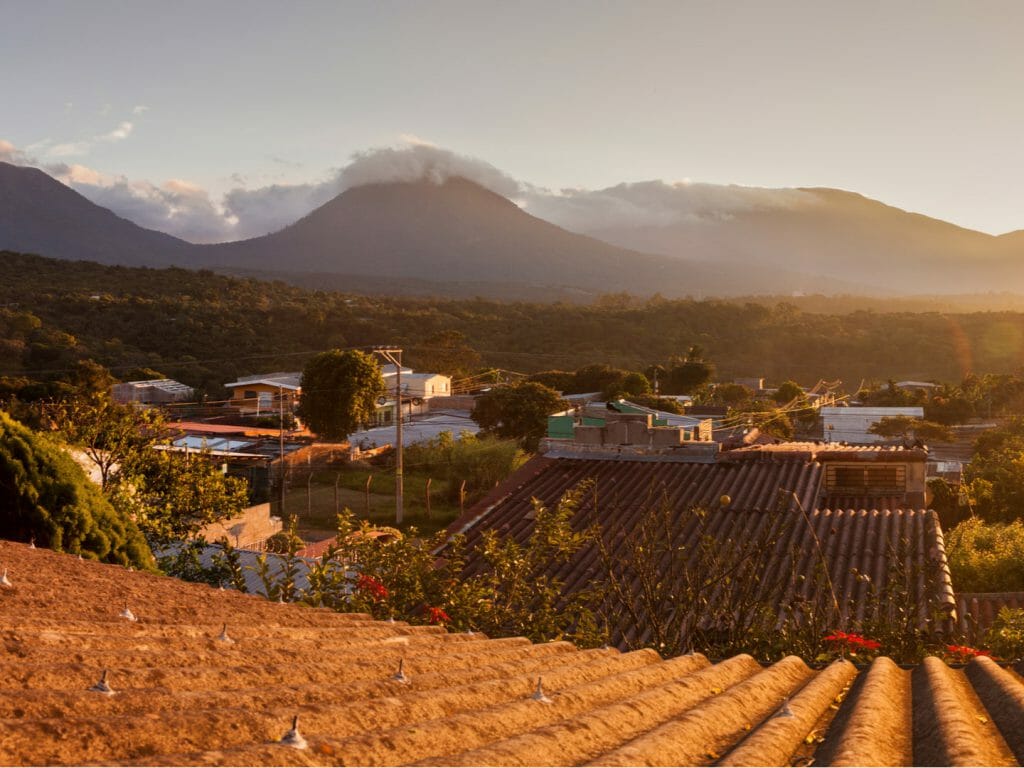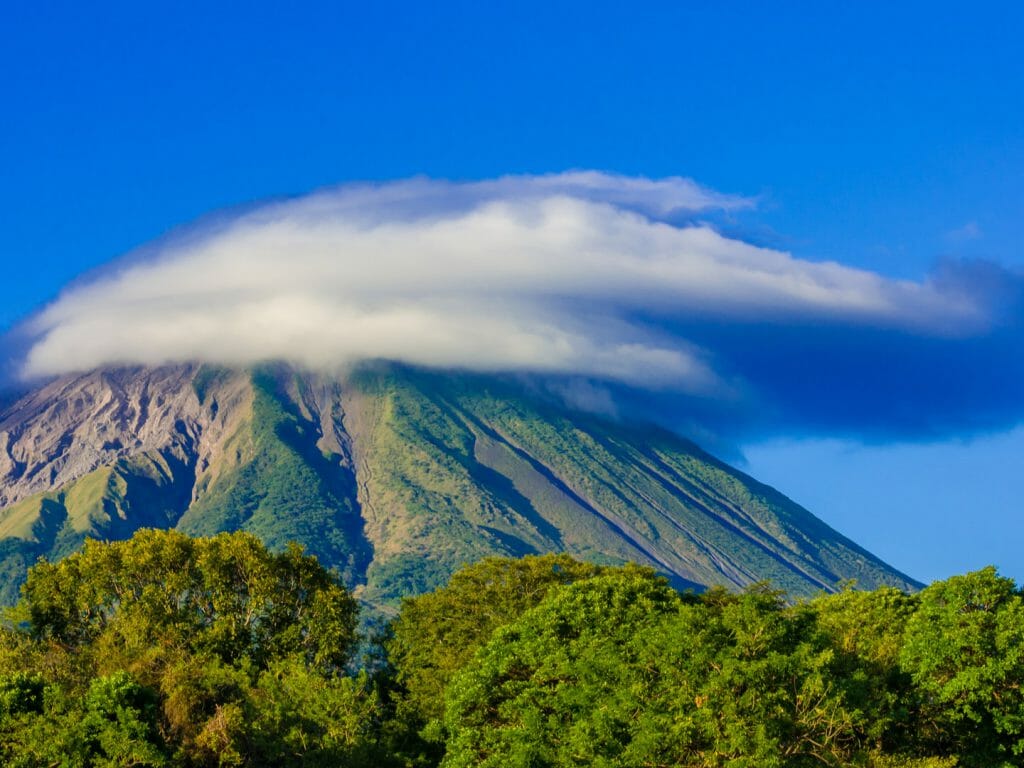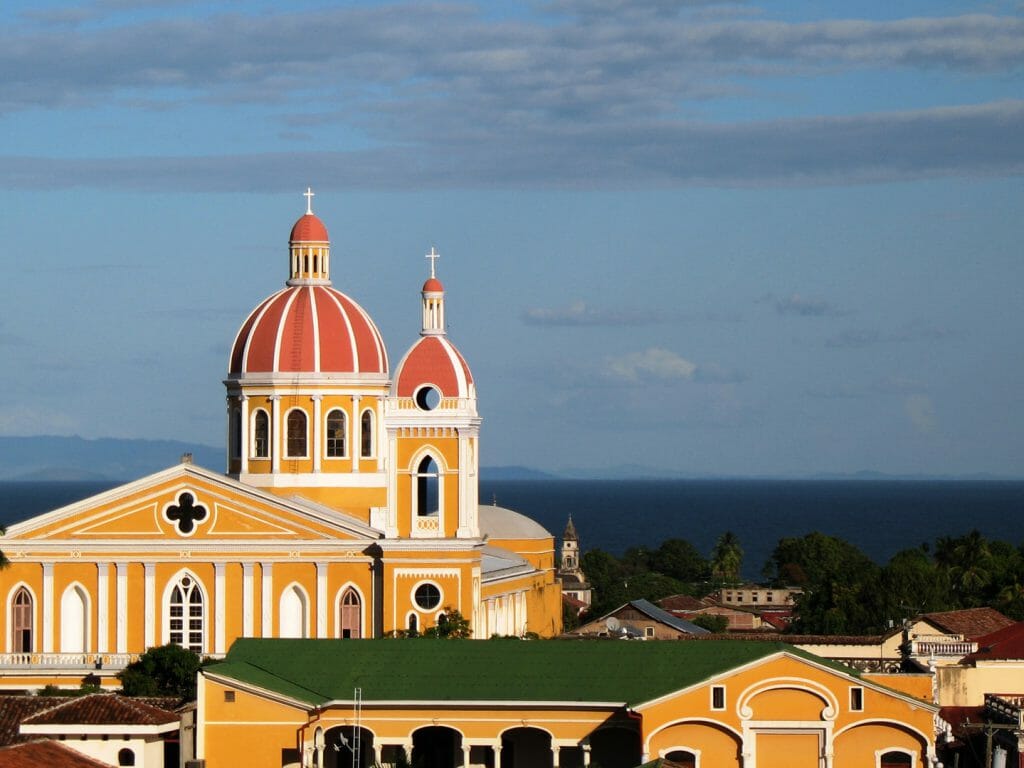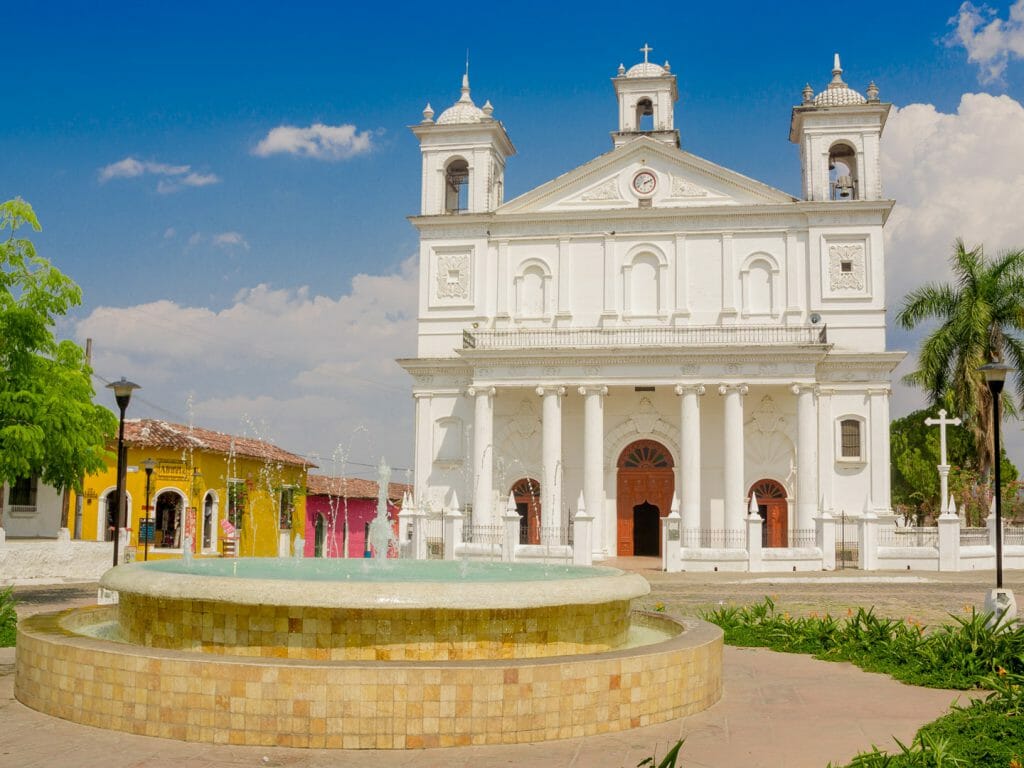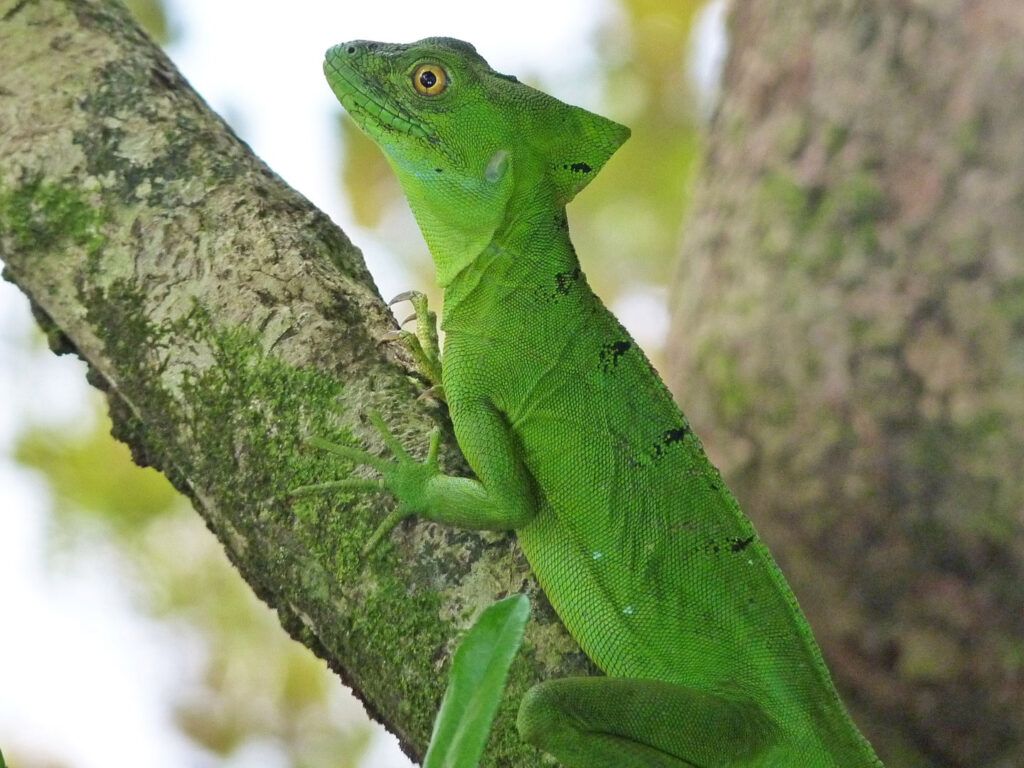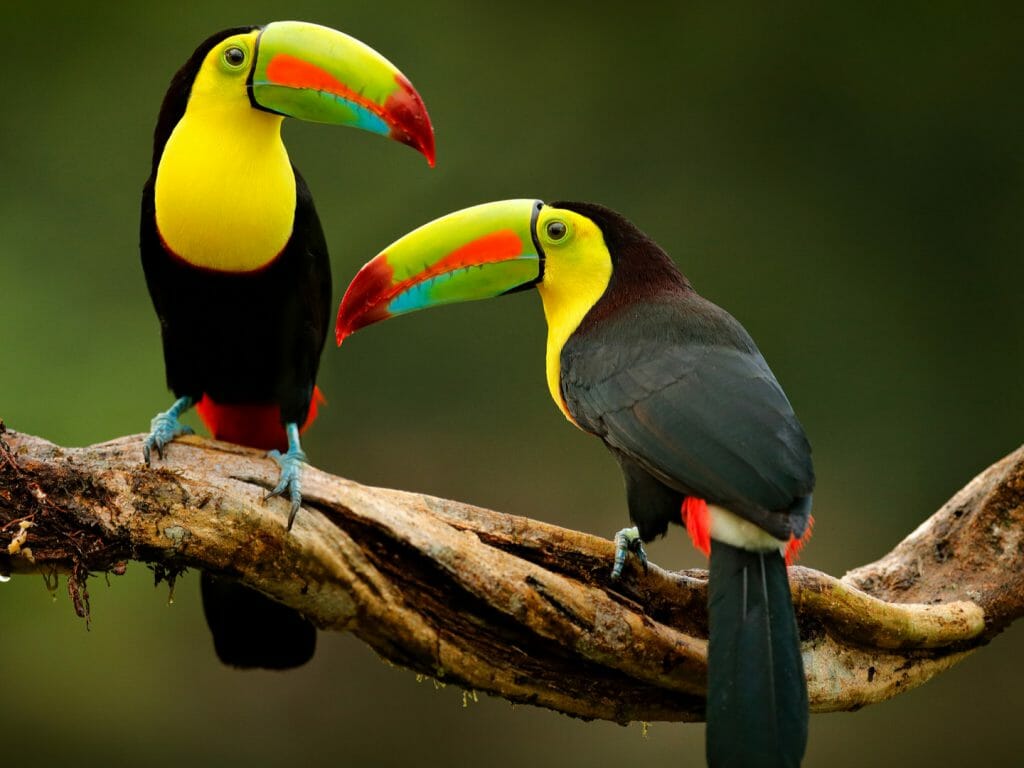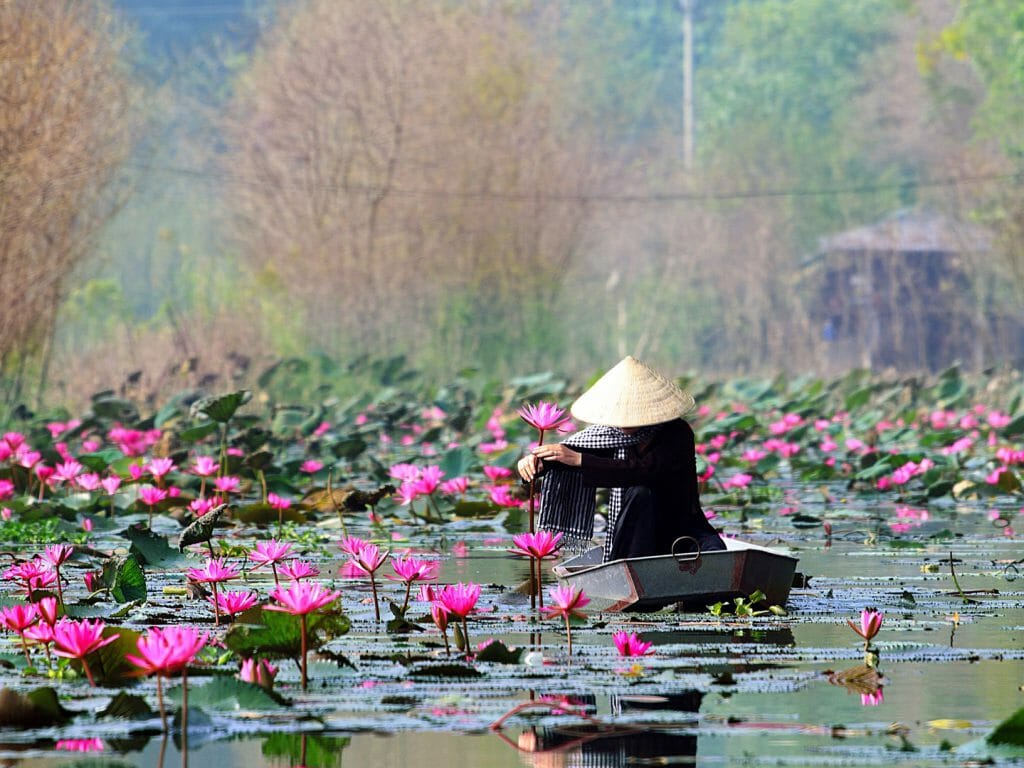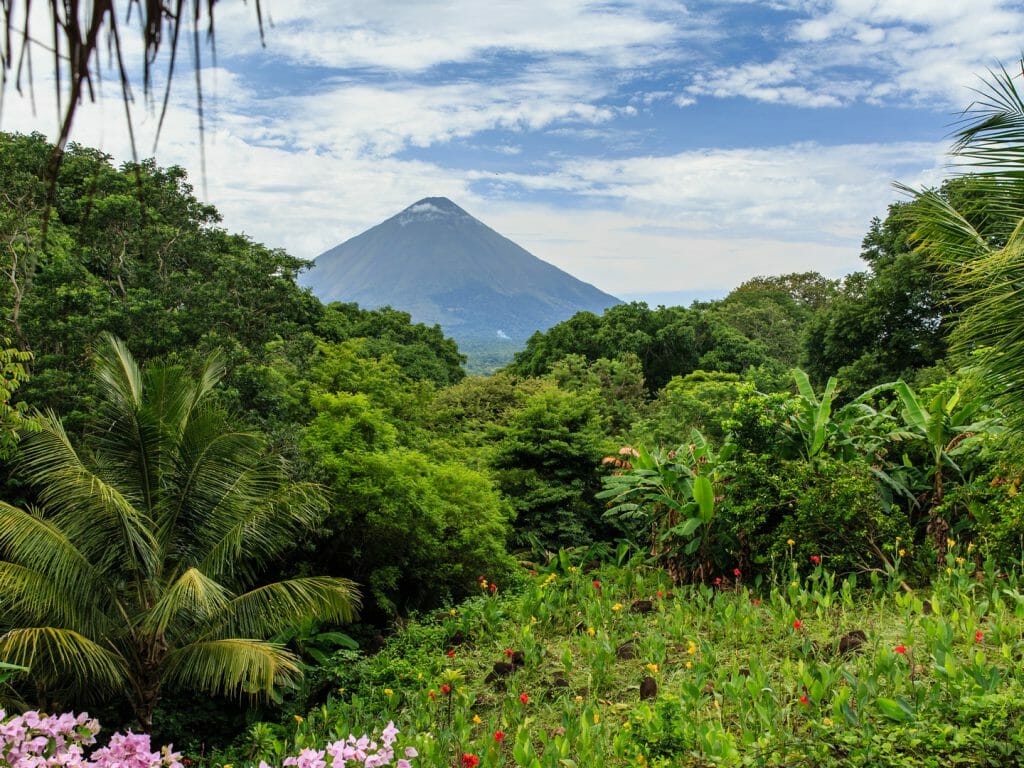I had been invited on a ‘Rodeo capture turtle tour’. With such a title, my expectations could not have been higher as the smiling Melissa Valle arrived by lancha, a motorised boat. For the last 10 years she has worked as Programme Coordinator for Procosta, an inspirational Salvadoran organisation that is female-led and spearheading the conservation of the hawksbill turtle in Jiquilisco Bay, an area of 100,000 hectares of mangroves.
We head off through green-lined mangrove banks, the tap roots exposed by the retreating tide. The tangle of roots allows the trees to handle the daily rise and fall of tides and slows the movement of tidal waters, stabilising the coastline and reducing erosion.
The intricate root system of the mangrove makes these forests attractive to fish and other organisms seeking food and shelter from predators. But it is not just the animals that have sought sanctuary within. Before the civil war the area was little inhabited; it now has some 1,000 families, predominantly fishing communities, living in the area. The effects of the civil war are far and long reaching.
After some fifteen minutes we stop alongside two other lanchas. In one are four stocky, burly fishermen who have just caught a turtle. In the second boat is Natalino, the local operations manager of the project, Sofia, a vet from San Salvador, and a hawksbill turtle.
The turtle emits a deep visceral sigh, which belies its feisty nature. The hawksbill is named for its narrow head and sharp bird-like beak, which helps it feed on its favourite meal – sponges. The turtles of Jiquilisco have moved from coral reefs to the estuaries and mangroves but this hasn’t quelled their spirit. The turtle frantically flaps its flippers. Undeterred, the team get to work.
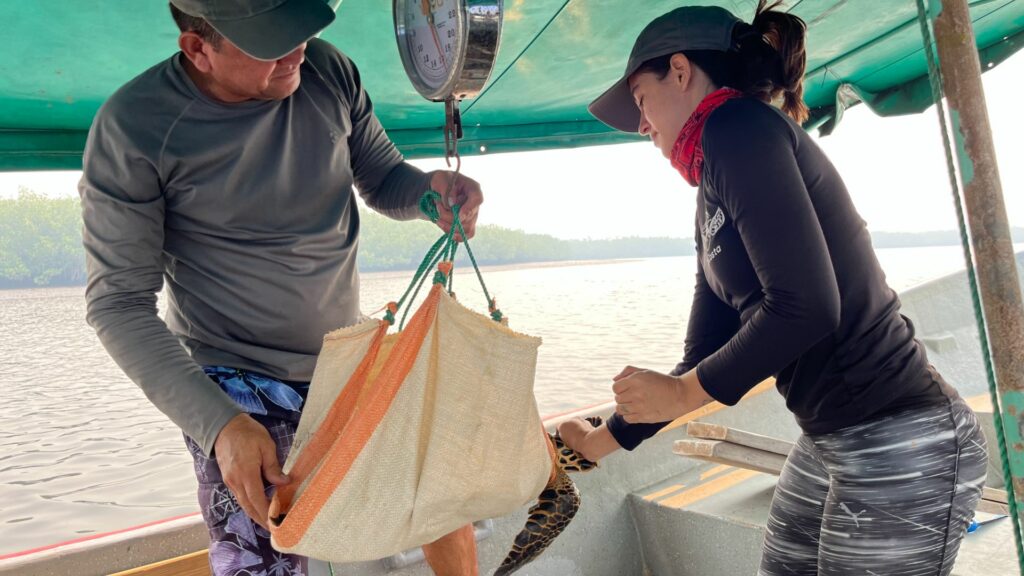
It is measured: length 49 centimetres and width 39 centimetres. It is a juvenile; adults grow up to one metre. It is weighed: pounds. It is tagged: this turtle had already been tagged, it is HA376.
500 nesting females and 400 juveniles have been tagged since the programme’s inception in 2008. For many years, the hawksbill was believed to be virtually extinct in the Eastern Pacific but, in 2007, local fishing communities informed the scientific community about remnant hawksbill nesting grounds.
Initially ProCotsa thought that there were 700 nesting females. Now they think that it is higher, which is good but sadly nothing compared to other turtle species – the hawksbill is considered critically endangered by the IUCN.
“We spend most of our time doing research and community building, through our local tourism and incentive programme,” Melissa explains.
“What’s the incentive programme?”
“If a fisherman spots a nesting female, he is paid US$5. He is also paid US$2.50 for every 14 eggs. If he doesn’t touch the nest and awaits the arrival of the hatcheries manager, he receives a further US$5. Finally, he is paid 10 cents for each hatchling born. A fisherman can receive US$50 for one nest.”
May to October, the nesting period for the hawksbill, can be a lucrative time for the fishermen. ProCosta’s community-based approach is transforming the well-being of coastal families.
But the communities are not the sole beneficiaries. Last year ProCosta achieved the most successful hawksbill nesting season in the organisation’s 15-year history. Together with its grassroots network, ProCosta’s women-led team protected 438 hawksbill nests and released 38,088 hatchlings—an increase of 8,000 on the previous year. With fewer than 700 adult female hawksbills remaining in the Eastern Pacific, every one of these hatchlings is critical. Not least as the area is home to 45% of the nesting females in the Eastern Pacific
Before ProCosta began its work the vast majority of hawksbill eggs laid on the beaches of Jiquilisco Bay were collected for human consumption. In 2022 ProCosta achieved a remarkable 99% nest protection rate with the support of the community. The eggs are carefully collected and relocated to one of ProCosta’s secure hatchery centres, each overseen by a hatchery manager recruited from the local community.
Melissa, who was nicknamed Rocola (juke box) at school, sings as she pulls the anchor and we head off again in search of more turtles.
“Green turtles,” she tells me, “Are much easier to catch. Because there are more of them and also because they are very calm on board.” ProCosta also works to conserve green turtles, which nest from November to February, inhabit slightly different areas and are captured at high tide.
The tide was low, we stopped again and waited, looking for the head of a hawksbill turtle surfacing for air. The wind stirs the mangroves, leaves and seeds succumb to gravity and plop noisily into the water, a fish splashes. A green heron perches peacefully amongst the entangled roots. A kingfisher fastidiously and furiously preens itself in its candelabra. Hawksbill turtles can be underwater for hours.
“You see this long tube? This is the seed of the mangrove and the hawksbills feed on it.”
“So they help to regenerate the mangroves through seed dispersal?”
“No, they actually crush the seed.” Perhaps sensing my disappointment that the turtles were not aiding the mangroves, one of the best carbon sinks on our planet, Melissa continued, “Hawksbills fertilise the mangroves through their poo. Also, their nesting and the eggshells provide nutrients to the beach and surrounding vegetation.”
Melissa read my thoughts “Hawksbills are important for the health of coastal ecosystems. If we want to protect the mangroves, we must protect the turtles.”
A pantomime shout of ‘behind you’ as the fishermen spot a turtle. They throw their net and manoeuvre their lancha in a circle hoping to entrap the unsuspecting turtle. Fishermen’s habits die hard and they slap the water trying to corral the turtle. In expectation, the fishermen get dirty and muddy – literally so as they stand waist-high in the water and begin the shoulder-building work of hauling in the net.
“De nada,” shouts one. Their disappointment: palpable. Even more so as their lack of success continues several more times. Melissa comments that the record haul in one net is nine turtles. Today was not that day. ‘Every day is a fishing day but not every day a catching day’.
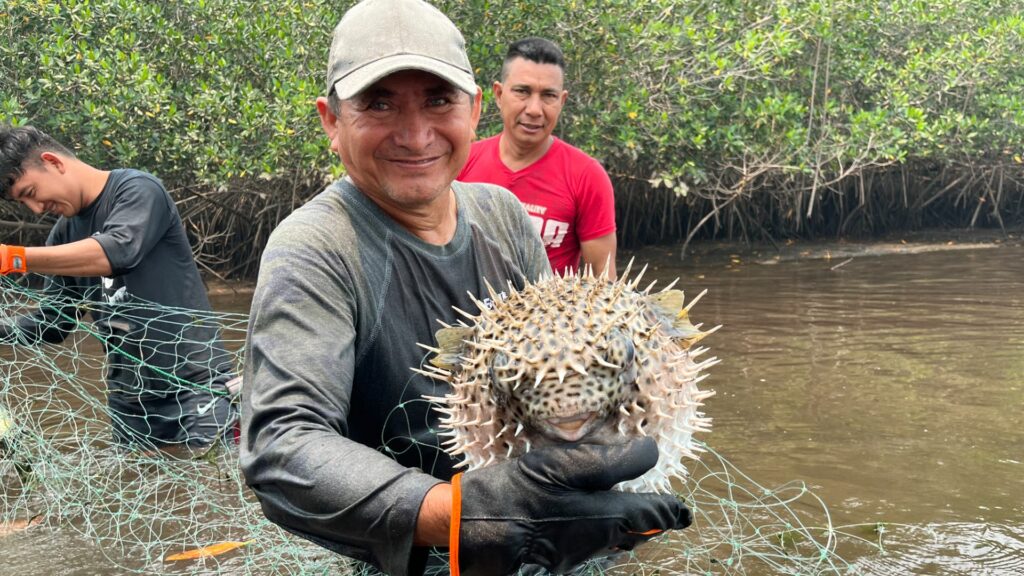
“Mala racha,” Natalino mutters. But then his losing streak takes a turn for the better. This time the net is full not just of a turtle but several spiky puffer fish. All are carefully disentangled from the net, the puffer fish more acquiescing than the belligerent hawksbill who is handed to a somewhat reluctant me.
The carapace is not smooth and polished like those of its larger sea cousins. It is dirt-coloured and slimy to touch. The serrated edge of the carapace is surprisingly sharp, drawing blood on my finger. I am surprised by its underside – Melissa explains that the hawksbill is unique for its large thick, overlapping (imbricate) scutes hence its Latin name Eretmochelys imbricata.
This turtle was smaller than the previous turtle. Its length was 42 centimetres, its width 35 centimetres and its 16 pounds weight cost me US$1. It turns out that Natalino’s luck had really turned as he guessed the weight correctly.
“Is this turtle younger than the other?”
“It is difficult to age it – reptiles grow according to food availability. This turtle could have been the same age as the other.”
Size notwithstanding, that this turtle has made it to this age is a statistical miracle. Melissa reminds me that a hatchling has a one in a thousand chance of making it to adulthood.
“About as much as Arsenal winning the premiership,” I quip. Rodrigo, a hatchery manager who is proudly wearing an Arsenal shirt, grimaces. The laughter at his expense speaks of the camaraderie of the team.
This turtle’s chances of survival are so much greater thanks to the work of Melissa and the Procosta community. As Melissa says, “The turtles are a great example of resilience and our work is part of the solution.”


